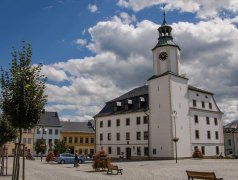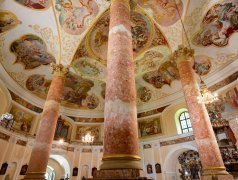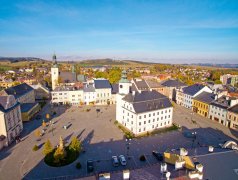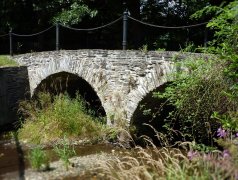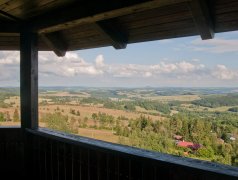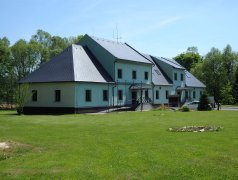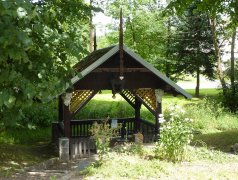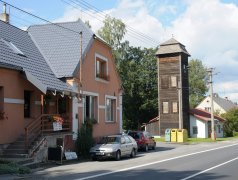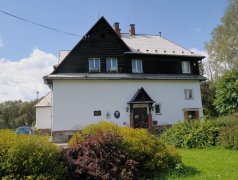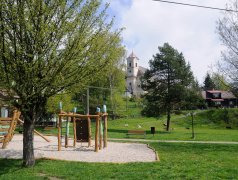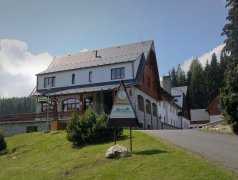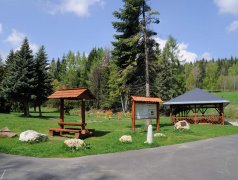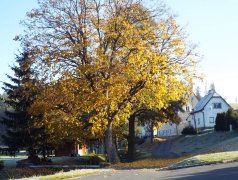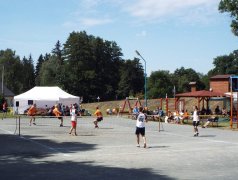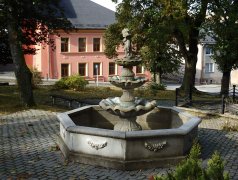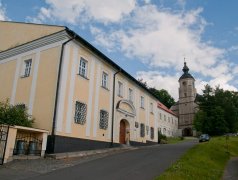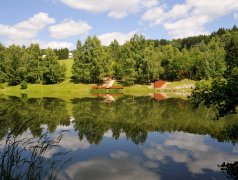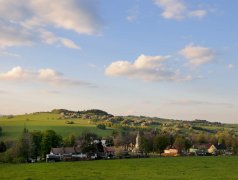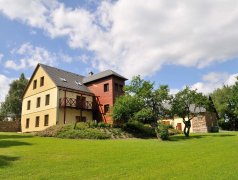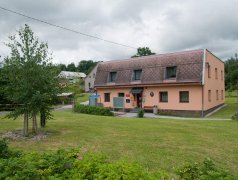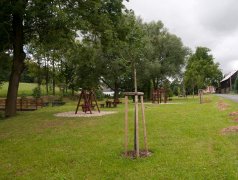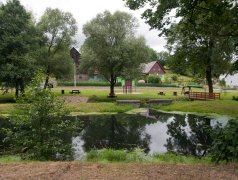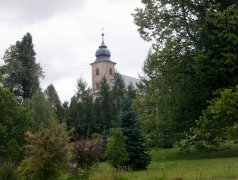Rýmařov
Statue of St. John of Nepomuk
The sandstone statue of St. John of Nepomuk was erected in 1736 by Severin Tischler and stands in the square in Rýmařov. The saint is portrayed as a priest in Roche, a ceremonial robe of white cloth down to his knees with wide sleeves, and a Biret - a hat stiffened by diagonal ribs, with five stars around his head. In his arms he is holding a cross with the crucified figure of Christ.
Statue of the Virgin Mary
Marian's column from 1683 is decorated with the Ditrichštejn and Hoffman coat of arms and on it is a highly valuable sculpture of the Immaculate Virgin Mary praying. It was created by the Olomouc sculptor Francis Leblose.





